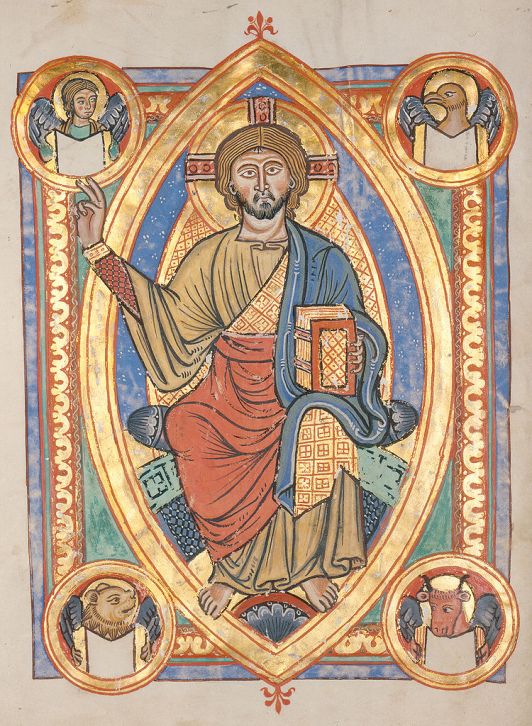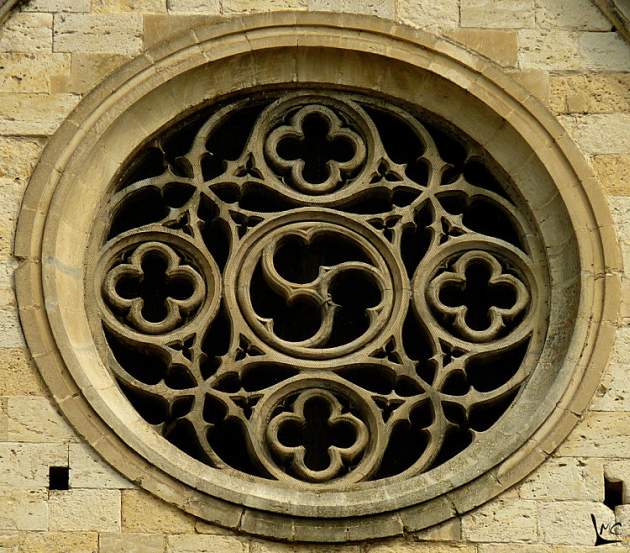One of my hopes for the cultural renewal is the revival of a Christian form of geometric patterned art. With this in mind, I have done my best to study past work, and try to discern the principles that underlie its creation. I wrote about resources that help in this respect in a previous article, here.
If tasked with the design of an ornate sanctuary floor now, for example, how might one go about it?
One approach, which was used by the Cosmati craftsmen of the middle ages was to have a large design for to fill the whole shape and then to infill with a variety of different geometric patterns. The Cosmatesque style is named after the Cosmati family which, over several generations, developed this distinctive style of work. If they were covering a large area, such as a whole church floor, they worked on three scales. For the grand form, they tended to compartmentalize into rectilinear shapes. Then the sub-form would be a geometric design consisting of faceted polygons or interconnected circles. The final stage would be an infill of with very small repeated regular geometric shapes such as squares, triangles or hexagons (which are the three forms that can put together without creating gaps).

Cathedral of Sessa Aurunca, 13th century
One of the sub-forms is called the ‘quincunx’. This the generic name for the arrangement of five equivalent shapes that has four arranged symmetrically around the fifth which is centrally placed (it is also a game-winning word in Scrabble so it’ll pay to remember this, if for no other reason). The five dots on dice, for example, are in a quincunx shape. I understand the name comes from the Latin for five-twelfths, a coin of this fraction value of the currency had this name and often had this arrangement of dots on it.
In the context of geometric patterned art, it is the shape of four smaller circles spinning of larger secondary one was not limited to the Cosmati craftsmen. It is seen in both Eastern and Western Churches and across many centuries. My class on the mathematics of beauty at http://www.Pontifex.University asks the student to design a floor for a sanctuary based upon it.
In some respects, the quincunx can be thought of as the geometrical equivalent of the traditional image of Christ in Majesty. Around the central image of the enthroned Christ, we see four figures representing the four evangelists carrying the Word to the four corners of the world. One of the reasons that the Church settled on four gospels was to emphasise this symbolism (see St Irenaeus writing in the 2nd century AD Against Heresies). The quincunx also symbolizes Creation, as the number four represents the cosmos. The symbolism is, again, the four corners of the world – Christ spoke of the ‘four winds’; and the four ‘elements’ of the ancients from which all matter is comprised. These elements are fire, water, earth and air. In modern science, the work element has come to mean something more specific than this. However, this does not invalidate this symbolism, to my mind, for they still symbolise very well, I feel the phases or states by which modern science categorises matter – solid, liquid, gas and energy (or alternatively plasma).
In his book on the Westminster pavement, which is the one example of Cosmati work in England, Richard Foster suggests that the inscriptions indicate that rather than signifying Creation, the quincunx signifies the final end. That is, rather than emanating from God, all is returning to God.


A 13th century French ivory carving, in the Musee de Cluny
Below is the Rose Window from Agen, Aquitaine, France. The central circle has been broken up into three, indicating, it seems to me, the Trinity as one God.

Above: sub-form of interconnected circles other than a quincunx, at S Maria in Trastevere, Rome

